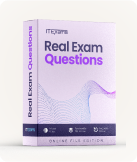IBM C2090-311 - IBM DB2 10.5 DBA for LUW Upgrade from DB2 10.1 Exam
Page: 1 / 6
Total 30 questions
Question #1 (Topic: )
What does the monitor element POOL_FAILED_ASYNC_TEMP_COL_REQS track?
A. The number of times an attempt to queue a column-organized prefetch request for temporary table spaces was made but failed.
B. The number of times a temporary error occurred while trying to queue a column- organized prefetch request for a regular table space.
C. The number of times DB2 had to retrieve a page from disk for a temporary column- organized table because the page no longer resided in the buffer pool.
D. The number of times an asynchronous read request failed when attempting to read temporary column-organized data from the buffer pool after the page had been flushed to disk.
Answer: B
Question #2 (Topic: )
When can a high availability disaster recovery (HADR) role switch operation be performed
in a DB2 pureScale environment?
in a DB2 pureScale environment?
A. When crash recovery is occurring on the standby cluster.
B. When all the log streams are in peer or assisted remote catchup state.
C. When the primary database is not connected to the standby database.
D. All the log streams are in remote catchup state and the synchronization mode is NEARASYNC.
Answer: D
Question #3 (Topic: )
Which statement about Explicit Hierarchical Locking (EHL) for DB2 pureScale is true?
A. EHL is enabled by default in DB2 10.5 pureScale environments.
B. There are three EHL states available: SHARED, DIRECT_ACCESS and NONSHARED.
C. Only regular tables, temporary tables, and non-partitioned indexes can take advantage of EHL.
D. EHL is designed to improve DB2 pureScale performance by avoiding CF communications for tables that are accessed from only one member.
Answer: A
Question #4 (Topic: )
Which type of compression is NOT provided as part of the DB2 Storage Optimization
Feature?
Feature?
A. Row compression
B. Index compression
C. Backup compression
D. Temporary table compression
Answer: C
Question #5 (Topic: )
Which statement regarding NOT ENFORCED unique constraints is true?
A. NOT ENFORCED unique constraints enforce uniqueness only for primary key columns.
B. The query optimizer will consider a NOT ENFORCED unique constraint when selecting the optimal data access plan.
C. Storage requirements for NOT ENFORCED unique constraints are identical to storage requirements for a unique index.
D. When attempting to insert data that does not conform to the NOT ENFORCED unique constraint, an error will be returned and the record will not be inserted.
Answer: A
